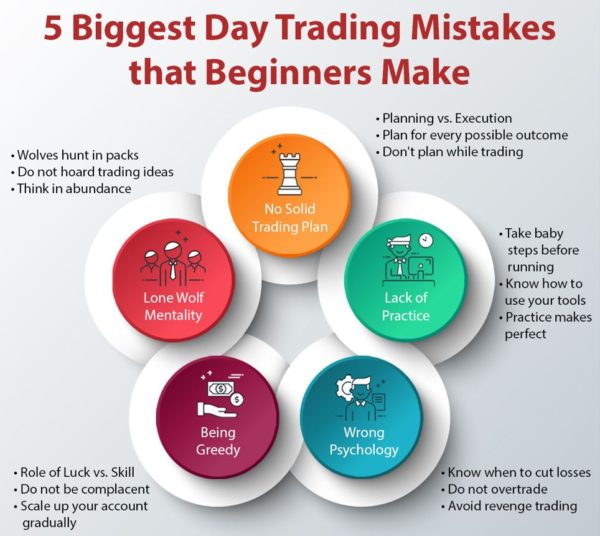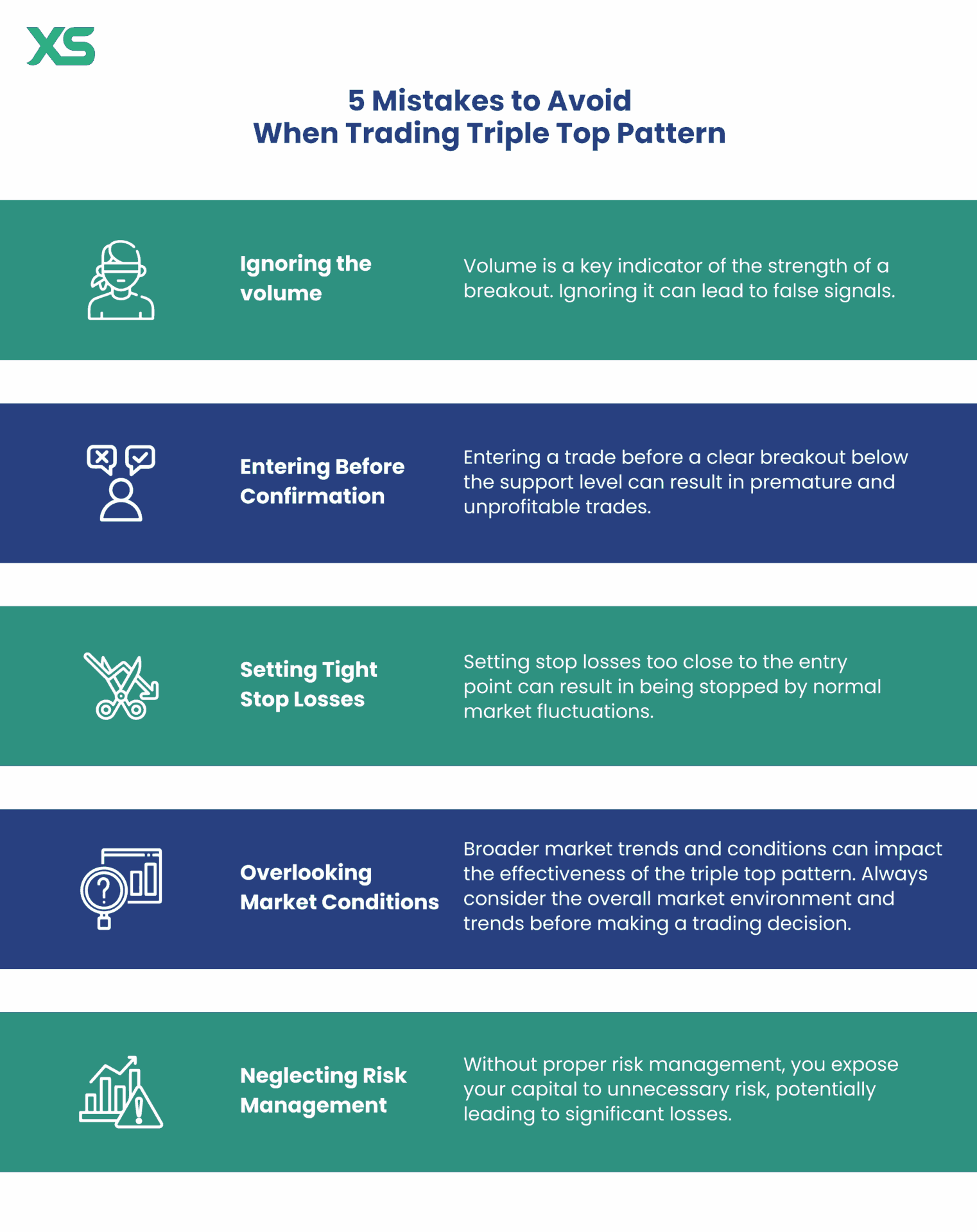Did you know that the average day trader spends more time analyzing charts than a chef spends perfecting a soufflé? While both require skill, day trading comes with its own set of pitfalls that can turn profits into losses. In this article, we dive into the most common mistakes in day trading analysis, from emotional trading and poor risk management to the misuse of analysis techniques and neglecting to adapt to market conditions. We’ll also explore the dangers of overtrading, the importance of a solid trading plan, and why understanding market trends and technical indicators is crucial. With insights from DayTradingBusiness, you'll learn how to avoid these traps and improve your trading strategy effectively.
What are the most common mistakes in day trading analysis?
The most common mistakes in day trading analysis include overtrading, relying too heavily on technical indicators without understanding market context, ignoring risk management, failing to keep emotions in check, and not having a clear trading plan. Traders often misinterpret signals or chase losses, leading to poor decision-making. Additionally, neglecting to review and learn from past trades can hinder improvement.
How can emotional trading impact day trading decisions?
Emotional trading can lead to impulsive decisions, causing traders to enter or exit positions based on fear or greed rather than analysis. This often results in chasing losses or failing to stick to a trading plan. For example, a trader might sell a stock too early out of fear of a loss, missing potential gains. Conversely, they might hold onto a losing position in hopes of a turnaround, leading to larger losses. To avoid these mistakes, traders should implement strict risk management strategies and stick to their trading strategy, minimizing the influence of emotions on their decisions.
Why is poor risk management a common day trading error?
Poor risk management is a common day trading error because traders often fail to set stop-loss orders, risking more capital than they can afford to lose. They may also over-leverage their positions, thinking they can maximize profits without considering potential losses. Additionally, emotional decision-making can lead to ignoring established risk parameters. This combination increases the likelihood of significant losses, ultimately affecting their trading success.
What analysis techniques do day traders often misuse?
Day traders often misuse technical analysis by over-relying on indicators like RSI and MACD without considering market context. They frequently misinterpret candlestick patterns, leading to poor entry and exit decisions. Many overlook volume analysis, failing to recognize its significance in confirming trends. Additionally, some traders ignore the broader market trends, focusing too narrowly on individual stocks. Lastly, emotional trading, driven by fear or greed, can distort analysis and lead to impulsive decisions.
How does lack of a trading plan lead to mistakes in day trading?

Lack of a trading plan in day trading leads to impulsive decisions, emotional trading, and inconsistent strategies. Without clear entry and exit points, traders often chase losses or miss profitable opportunities. This chaos can result in overtrading, poor risk management, and ultimately, significant losses. A solid plan helps maintain discipline, guiding traders to stick to their strategy and analyze market conditions objectively.
Why is failing to adapt to market conditions a mistake in day trading?
Failing to adapt to market conditions in day trading is a mistake because it leads to missed opportunities and increased losses. Markets are dynamic; ignoring changes means you're trading with outdated strategies. For example, if volatility spikes but you stick to a conservative approach, you might miss profitable trades. Additionally, adapting helps manage risk—ignoring market signals can expose you to unnecessary losses. Ultimately, flexibility allows you to capitalize on trends and protect your capital, which is crucial for success in day trading.
How can overtrading affect day trading success?
Overtrading can significantly harm day trading success by leading to increased transaction costs, emotional fatigue, and impulsive decisions. When traders execute too many trades, they incur higher commissions and fees, which can erode profits. Additionally, constant trading can cloud judgment, causing traders to ignore their strategies and make poor choices. This can result in larger losses and missed opportunities. To succeed, focus on quality trades rather than quantity, maintaining discipline and a clear trading plan.
What role does inadequate research play in day trading errors?
Inadequate research leads to poor decision-making in day trading, causing traders to miss critical market trends and signals. Without thorough analysis of stock fundamentals and technical indicators, traders may enter or exit positions at the wrong time, resulting in losses. Lack of knowledge about market conditions or economic news can also lead to impulsive trades based on emotion rather than strategy. Overall, insufficient research increases the risk of costly mistakes and missed opportunities in day trading.
How does ignoring technical indicators lead to trading mistakes?
Ignoring technical indicators can lead to trading mistakes by causing poor entry and exit decisions. Without these indicators, traders may misinterpret market trends or miss key signals for reversals. This oversight can result in buying at peaks or selling at lows, leading to unnecessary losses. Additionally, overlooking indicators like support, resistance, and volume can prevent traders from identifying the right risk-reward ratios, ultimately jeopardizing their overall strategy. Effective day trading requires a balanced approach that includes technical analysis to make informed decisions.
Why is it essential to avoid confirmation bias in day trading?
Avoiding confirmation bias in day trading is essential because it leads to making decisions based on preconceived notions rather than objective analysis. This bias can cause traders to ignore critical information that contradicts their beliefs, resulting in poor trades and missed opportunities. By staying open to diverse perspectives and data, traders can make more informed decisions, adapt to market changes, and improve overall performance. Recognizing and mitigating confirmation bias enhances analytical skills and promotes a more disciplined trading strategy.
What mistakes do traders make when setting stop-loss orders?

Traders often make several key mistakes when setting stop-loss orders:
1. Too Tight: Setting stop-loss orders too close to the entry point can lead to premature exits from trades due to normal market fluctuations.
2. Too Loose: Conversely, placing stop-loss orders too far away can result in significant losses before the trade is closed.
3. Ignoring Volatility: Failing to account for market volatility can lead to stop-loss orders being triggered unnecessarily.
4. Not Adjusting: Traders often forget to adjust stop-loss levels as the trade progresses and the market conditions change.
5. Emotional Decisions: Allowing emotions to dictate stop-loss placement can lead to irrational decisions, like moving the stop-loss further away to avoid a loss.
6. Fixed Percentage: Relying on a fixed percentage for stop-loss placement without considering the specific asset’s behavior can be detrimental.
Avoid these mistakes to enhance your trading strategy and minimize losses.
How can misunderstanding market trends lead to bad day trading decisions?
Misunderstanding market trends can lead to poor day trading decisions by causing traders to enter positions based on incorrect assumptions. For instance, if a trader misreads a bullish trend as bearish, they might short a stock that’s actually poised for gains, resulting in losses. Similarly, failing to recognize a trend reversal can keep a trader in a losing position longer than necessary. Emotional decisions driven by misinterpretation can also lead to impulsive trades, compounding mistakes. Staying informed and analyzing trends accurately is crucial to avoid these pitfalls.
Learn about How to Analyze Market Trends for Day Trading
Why is it important to learn from past trading mistakes?
Learning from past trading mistakes is crucial because it helps you avoid repeating them, enhances your decision-making skills, and improves your overall trading strategy. Analyzing previous errors allows you to identify patterns, refine your risk management, and develop a more disciplined approach. This continuous improvement leads to better performance and greater profitability in day trading.
How can unrealistic profit expectations result in day trading failures?
Unrealistic profit expectations can lead to day trading failures by causing traders to take excessive risks, ignore proper risk management, and make impulsive decisions. When traders expect quick, substantial gains, they may hold onto losing positions too long, hoping for a turnaround, or over-leverage their accounts in pursuit of high returns. This mindset can lead to significant losses, emotional trading, and a lack of discipline. Ultimately, setting unattainable profit goals can cloud judgment and derail a trader's strategy, resulting in failure.
What common mistakes do new day traders make with leverage?
New day traders often make several common mistakes with leverage:
1. Over-leveraging: Many traders use too much leverage, thinking it will maximize profits. This increases the risk of significant losses.
2. Lack of Risk Management: Failing to set stop-loss orders can lead to devastating losses. Traders should always protect their capital.
3. Ignoring Margin Calls: New traders may not fully understand margin requirements and can face margin calls, forcing them to sell positions at a loss.
4. Emotional Trading: Using leverage can amplify emotions, leading to impulsive decisions rather than following a trading plan.
5. Underestimating Costs: Traders often overlook fees and interest on borrowed funds, which can erode profits.
6. Chasing Losses: New traders might use leverage to recover from losses, which can spiral into greater financial trouble.
Avoiding these mistakes can help new day traders manage risk effectively and improve their chances of success.
Learn about Common Mistakes in Order Flow Analysis for Day Traders
How does neglecting to track performance contribute to trading errors?
Neglecting to track performance leads to trading errors by preventing you from identifying patterns in your decisions. Without tracking, you can't analyze which strategies work and which don't. This lack of insight can cause repeated mistakes, like overtrading or holding losing positions too long. Additionally, failing to monitor performance means missing out on important metrics like win rates and risk-reward ratios, which are crucial for making informed adjustments. Ultimately, not tracking performance erodes discipline and contributes to emotional decision-making, increasing the likelihood of losses.
Conclusion about Common Mistakes in Day Trading Analysis to Avoid
In summary, avoiding common mistakes in day trading analysis is crucial for success. From emotional trading and poor risk management to inadequate research and misunderstanding market trends, these pitfalls can significantly impact decision-making. Establishing a solid trading plan and adapting to market conditions are essential for minimizing errors. By learning from past mistakes and maintaining realistic profit expectations, traders can improve their strategies. DayTradingBusiness is here to provide guidance and support, helping you navigate these challenges effectively.
Learn about Common Mistakes in Day Trading Sentiment Analysis
Sources:
- Satellite data of atmospheric pollution for U.S. air quality ...
- Understanding the High Failure Rate in Trading: Why 99% of ...
- TIPS FOR AVOIDING THE TOP 20 COMMON INVESTMENT ...
- Industrial Policy is Back But the Bar to Get it Right Is High
- Avoiding common machine learning pitfalls - ScienceDirect
- Preventing human error: The impact of data entry methods on data ...